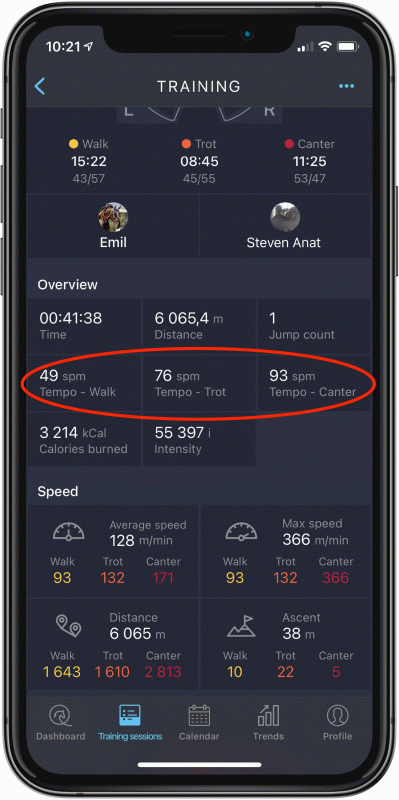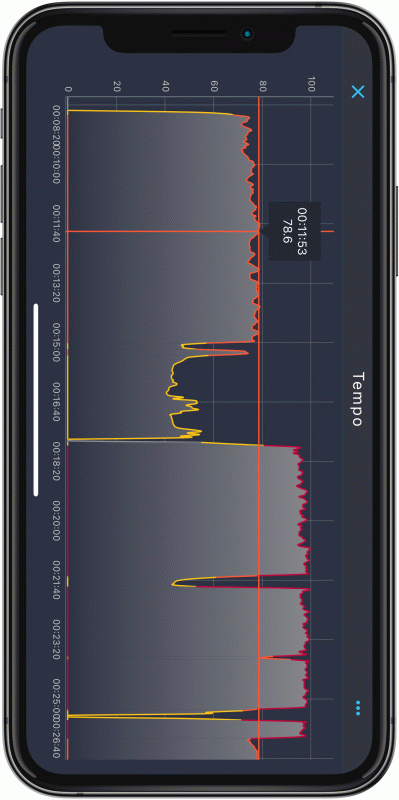How to Use TEMPO Data to Maximize Your Takeaways.
Tempo is the speed of motion or activity. It is often mistaken for rhythm, but that is a brand different thing. Rhythm is a steady repeated pattern of movement. Each gait has its rhythm (four-beat walk, two-beat trot, three-beat canter), and many riders work hard to teach their horse to maintain a regular rhythm. Learning to carry a balanced rhythm in a natural tempo allows the horse to develop balanced gaits at different speeds (tempos).
The tempo is an essential value in your ride. Walk varies approximately between 35 - 60 strides per minute, trot between 55 - 100 strides per minute, and canter between 80 and 130 strides per minute. Extended and collected gaits are, in fact, just slower or quicker tempos in the given gait. To teach a horse to react and go faster or slower by five strides per minute gives you a range of 10 spm in the gait, which gives you the ability to change the pace at will. These changes also depend on the breed and physiology: going from a standard 55 up to 60 spm is easy for a Baroque horse but more difficult for a Warmblood. On the other hand, going from 55 spm to 50 spm is easy for a Warmblood but more difficult for a Baroque horse.
Tense horses tend to go slower in some parts of an arena or a circle, and faster in other parts. By controlling the tempo, thus slowing the quickening and quickening and slowing, you give those horses controllability and predictability - two things trainers call consistency. If you are a showjumper, you have heard this word repeatedly; finding the right and consistent tempo is a massive milestone in training. The average Grand Prix round requires a tempo of 110 spm; a number you can keep in mind for your sessions.
Tempo is measured in two values: strides per minute and meters per minute. Strides per minute are efficient for the knowledge about gaits. Meters per minute are used to determine the average tempo of a showjumping course. This value is also easier to imagine, as it can quickly be converted to kilometers per hour.
NOTE: You can zoom the tempo chart with two fingers. If you click on the curved line, you will see a precise tempo value in spm (on axis y) of any moment of your session.







